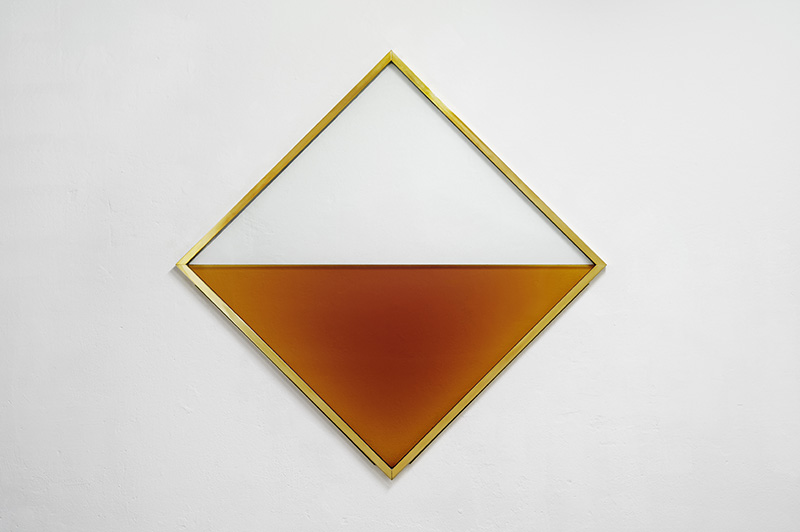ART CITIES:Tokyo-Reijiro Wada & Ariel Schlesinger

Reijiro Wada and Ariel Schlesinger co-exhibit at Scai the Bathhouse Gallery in Tokyo. Reijiro Wada realizes large-scale interventions, usually situated in natural environments, which are constructed by manipulating heavy and durable material such as stone, concrete and glass. The work of Ariel Schlesinger makes playful, occasionally kinetic and often threatening sculptures seem to be as much the work of an unhinged inventor as that of a post-conceptual artist.
By Dimitris Lempesis
Photo: Scai The Bathhouse Gallery Archive
Often located in nearly inaccessible sites (underground, in a middle of a lake, at the top of a waterfall) Reijiro Wada’s sculptures can be called non-monuments, a place of flux between trace and absence, and between materiality and memory, which highlights the inevitable fleeting nature of our relationship to things. Reijiro Wada’s “VANITAS” (2015) is a 6-meter brass sculpture, the artist placed two panels at an acute angle, and threw various fruits into the gap between the brass plates. Over time, the fruit’s acidity eroded the surface of the brass, and a patina was formed from the trace of its movement. The title directly references the historical category of symbolic works associated with still life paintings of the 16th and 17th Centuries. In this tradition, skulls and rotten fruit are metaphoric portrayals of corporeal death, evoking vanity and the transient nature of life. The work evolved from Wada’s earlier “Still Life series” (2014 – ) and forms an abstract composition and somewhat apocalyptic worldview, as the organic trajectory of the work signals an inevitable absence and decay. This view is echoed in “MITTAG” (2015), a wall-mounted brass frame with brandy poured into a glass container. Here, the amber liquid creates an equilibrium in infinite horizon, capturing a moment in mid-day where the sun casts no shadow – leading to a reduction of the sculpture to a minimalist abstraction in its purest form. Ariel Schlesinger looks at our reality in a poetic way, deflecting everyday objects in some discrete subversion. With humor and in an offhand manner, he achieves to insufflate life to those objects, turning them away from their original purpose, shifting them through subtle transformations. In his new work commissioned for the exhibition “Gas Loop” (2016) -a flame is ignited from the emitted gas of a cylinder tank, which continues to burn its own body. The sight immediately arouses fear from the audience anticipating its sudden explosion, at the same time, it humorously suggests the threat of destruction through a gesture of attacking a stable system. For “Inside Out Skull” (2014), the artist crushed a human skull and glued the pieces inside out, physically reversing the portrayal of death. The symbols of death and change reappear in his photo series “Three Commas Club” (2016), where flames represent a lapse of time and a thin stream of smoke suggests the vanity of life.
Info: Scai The Bathhouse Gallery, Kashiwayu-Ato, 6-1-23 Yanaka, Taito-ku, Tokyo, Duration: 27/1-25/2/17, Days & Hours: Yue-Sat 12:00-18:00, www.scaithebathhouse.com
